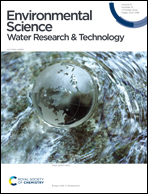Typical organic fouling in the electrodialysis concentration/desalination process of shale gas fracturing flowback water
Abstract
Electrodialysis (ED) is a prospective technology in the treatment and reclamation of fracturing flowback water (FFW). Membrane fouling induced by complex organics in FFW may be one of the main factors affecting the industrial application of electrodialysis. Therefore, the effect and fouling of three typical organics in the treatment of FFW by ED were studied systematically. The effect of the organics on the inorganic ion flux was studied. It was shown that the organics could reduce the flux of Ca2+ due to the interaction between the organics and ions, and have little effect on the flux of Cl− and K+. The permeation flux of the organics was different due to their different degrees of ionization, molecular structures, and sizes. The order of the organic flux was ChCl > SE > APAM. Electrostatic interaction and the spatial effect are important factors causing membrane fouling. CEM–ChCl, AEM–SE, and AEM–APAM were the main fouling membranes in this paper. Organics with larger molecules and complex structures would be enriched on the membrane surface forming a fouling layer. The cleaning experiment showed that the membrane fouling was reversible to some extent.



 Please wait while we load your content...
Please wait while we load your content...